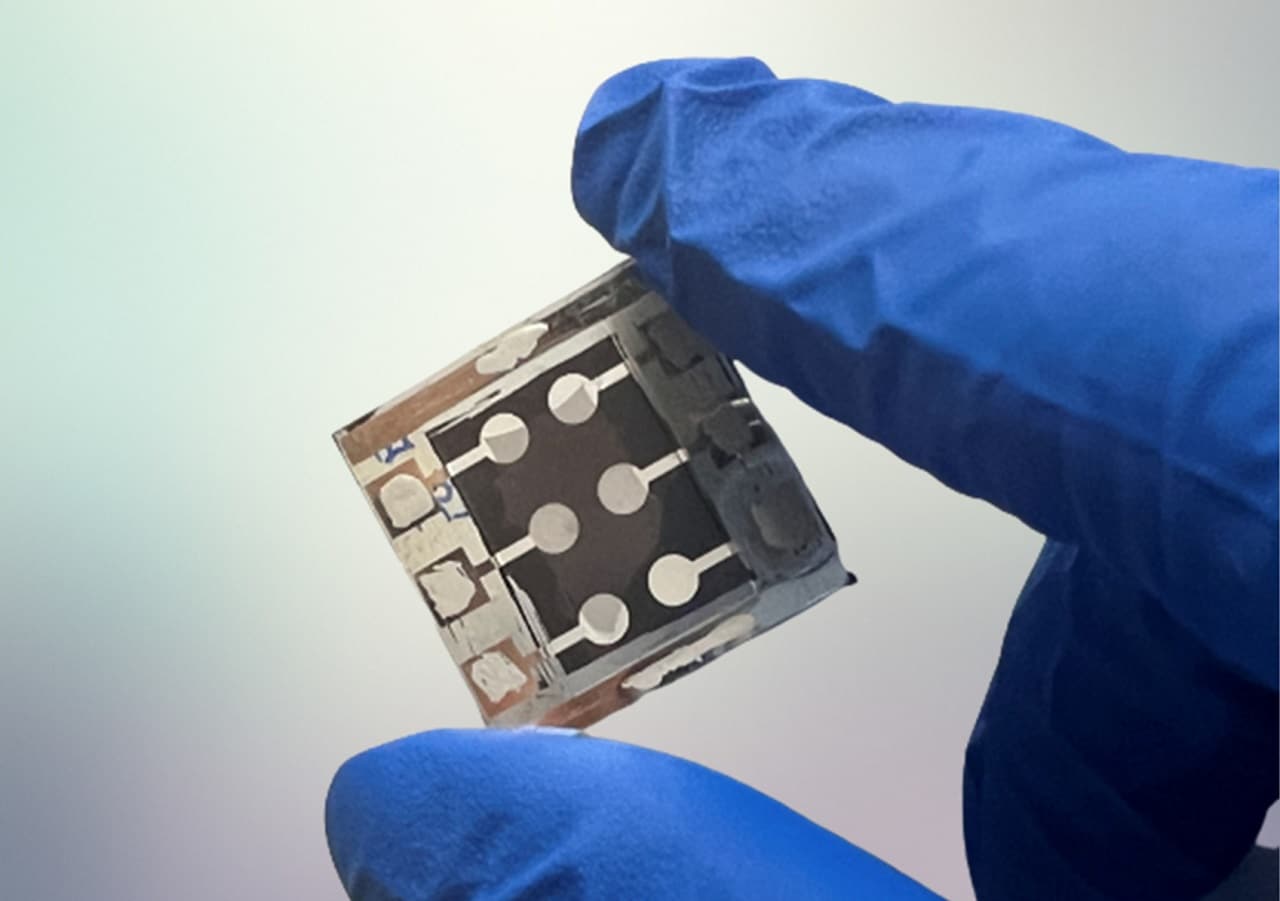
Perovskite solar cells (PSCs) are the most emerging area of research among different new-generation photovoltaic technologies due to their high efficiency and low production cost. However, the existing layer-by-layer manufacturing process presents challenges that have hindered the commercialization of this technology.
A research team from the City University of Hong Kong (CityU) and the National Renewable Energy Laboratory (NREL) has developed an innovative one-step solution-coating approach that simplifies the manufacturing process and lowers the commercialization barriers for PSCs.
The typical layer-by-layer fabrication process involves sequentially depositing different layers of the solar cell on top of each other. This process has been successful in producing high-performance perovskite solar cells, but it causes issues that may hinder their commercialization, such as increased fabrication cost, unsatisfactory uniformity, and reproducibility.
To overcome these problems, researchers have invented a new approach for fabricating efficient inverted perovskite solar cells in which the hole-selective contact and perovskite light absorber can spontaneously form in a single solution-coating procedure.
Researchers observed that phosphonic or carboxylic acids, incorporated into perovskite precursor solutions, self-assemble on the indium tin oxide substrate during perovskite film processing. They form a robust self-assembled monolayer as an excellent hole-selective contact while the perovskite crystallizes. This single solution-coating procedure solves wettability issues and simplifies device fabrication, advancing the manufacturability of PSCs.
The newly created PSC device with the new approach has a power conversion efficiency of 24.5% and can retain more than 90% of its initial efficiency even after 1,200 hours of operating at the maximum power point under continuous illumination. Its efficiency and performance are comparable to that of similar PSCs in the market.
The approach shows good generality as it is compatible with various self-assembled monolayer molecular systems, perovskite compositions, solvents, and scalable processing methods, such as spin-coating and blade-coating techniques.
“By introducing this innovative approach, we hope to contribute to the perovskite research community by proposing a more straightforward method for manufacturing high-performance perovskite solar cells and potentially accelerating the process of bringing them to market,” explained Dr. Zhu Zonglong, a co-leader of the research and an assistant professor in the Department of Chemistry at CityU.
The research team plans to further explore the relationship between self-assembled monolayer molecule structures and perovskite precursors to identify an optimal group of self-assembled monolayer molecules for this technique, thereby enhancing the overall performance of the PSCs.
Journal reference:
- Xiaopeng Zheng, Zhen Li, Yi Zhang, Min Chen, Tuo Liu, Chuanxiao Xiao, Danpeng Gao, Jay B. Patel, Darius Kuciauskas, Artiom Magomedov, Rebecca A. Scheidt, Xiaoming Wang, Steven P. Harvey, Zhenghong Dai, Chunlei Zhang, Daniel Morales, Henry Pruett, Brian M. Wieliczka, Ahmad R. Kirmani, Nitin P. Padture, Kenneth R. Graham, Yanfa Yan, Mohammad Khaja Nazeeruddin, Michael D. McGehee, Zonglong Zhu & Joseph M. Luther. Co-deposition of hole-selective contact and absorber for improving the processability of perovskite solar cells. Nature Energy, 2023; DOI: 10.1038/s41560-023-01227-6
New approach advances perovskite solar cell manufacturing and commercialization
Source: Tambay News

0 Comments